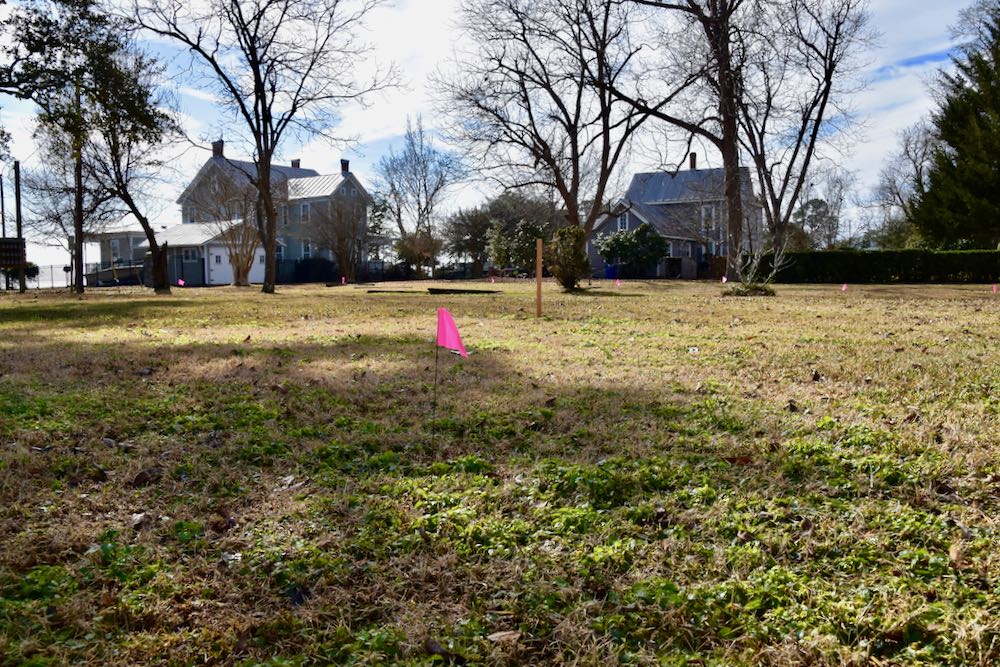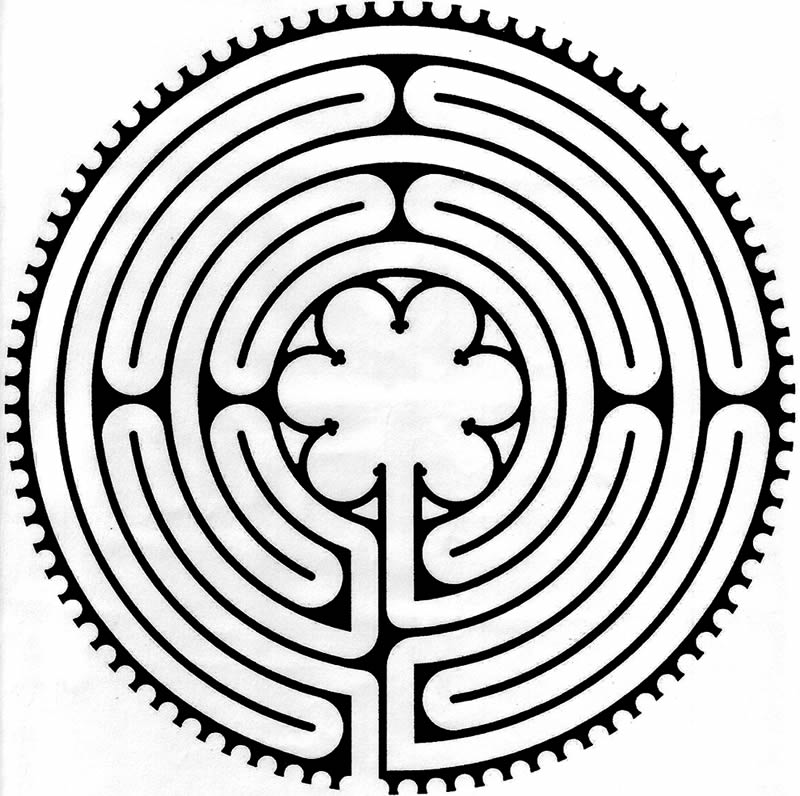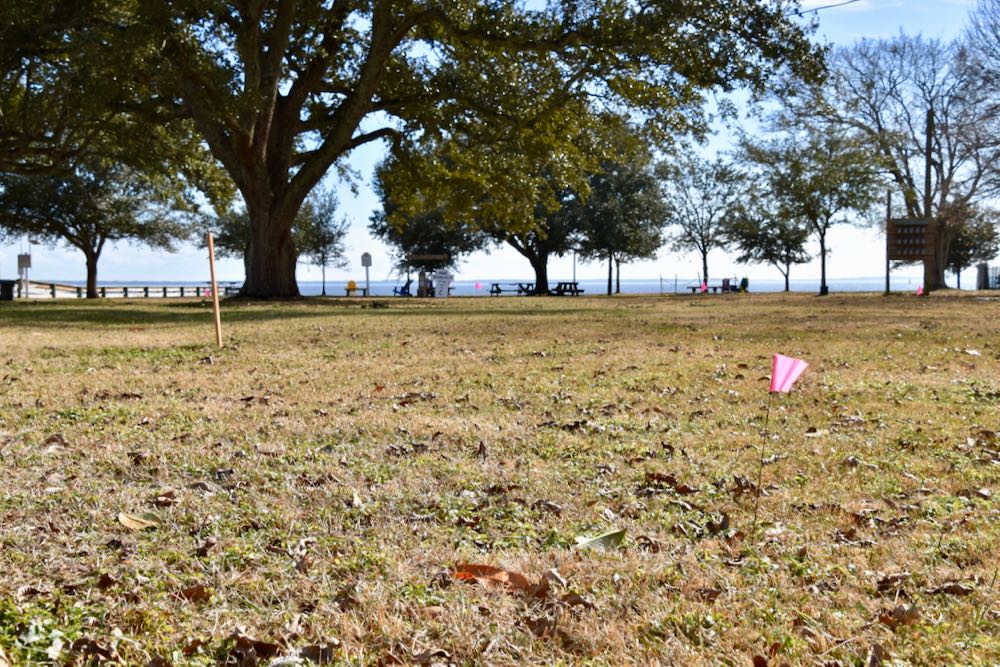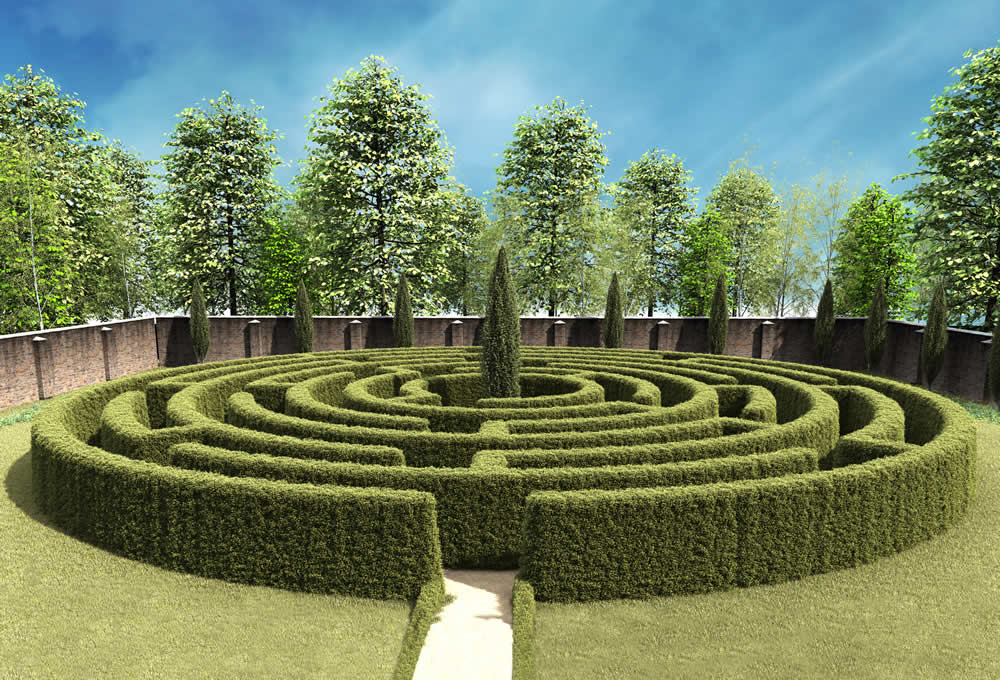It's Sunday November 16, 2025
January 24, 2018
Awooden stake rises from the back left corner of the lot across from Lou Mac Park. Small neon flags mark a rough circle in the grass where the parsonage for the Oriental United Methodist Church (OUMC) stood for more than 50 years. Though the lot has stood empty since 2009 when the parsonage was torn down, it has been used for vendors and stages for The Ol’ Front Porch Music Festival, CroakerFest, and other community events. A few years ago, a special committee in the OUMC began looking into a way to “use the property on South St. … how it could be used to serve the church and community in a meaningful way.”John Philips, a member of the original committee, said they had several requirements for any new structure. Whatever the church built, it had to be aesthetically pleasing, representative of OUMC’s faith, welcoming to all persons from all walks of life, and a place to deepen one’s spirituality. A few ideas were discussed and in August of 2016, the committee picked one: a labyrinth.
This is the current design. Some details may change as the project progresses. As with all labyrinths, there is one way into and out of the center. People walk it, sometimes in meditation, sometimes in prayer, or just for the experience.It was a new idea for many in the OUMC, but not unheard of on church properties. There is a painted canvas labyrinth in the North Carolina United Methodist Church Conference (a regional governing body). Aided by the services of a worldwide labyrinth locator, John found several in nearby churches. Others are being built in places such as the UNC Cancer Center in Chapel Hill.
The labyrinth is a significant undertaking for OUMC. They formed teams to tackle the challenge: a construction team, a dedication team, and one for communications. Not all members are from the Methodist church. All funding has come from private donations. John Philips and Cyndy Little are co-chairs of the project and together, they oversee all aspects of the build.
Future home of the OUMC Community Labyrinth.Cyndy cites the example of France’s Catholic Chartres Cathedral as one of the earliest examples of labyrinths in Christianity. Completed early in the 13th century, the Chartres labyrinth was placed in the nave. Services are held on top of it, until Lent when the chairs are moved and it is opened for walking and meditation. Cyndy hopes Oriental’s Community Labyrinth, as it has come to be called, can be used in conjunction with the riverside services that take place at Lou Mac during the warmer months.
For an explanation of a labyrinth, Cyndy turned to the words of OUMC’s Bishop, Hope Ward. “A labyrinth is not a maze. The maze tries to trick us up,” she wrote. “You enter the labyrinth and you follow the path that winds and turns and finally leads you to the center.” For OUMC and other faiths, walking the labyrinth represents a spiritual journey.
But the distinction between maze and labyrinth was not always clear. Speculation led to questions about the design and construction. Would it be made of hedges? Could you get lost in it? What goes in the center?
A design for the labyrinth had to be decided. Books were bought, websites examined.
It was decided that a trip to an actual labyrinth was needed. That worldwide labyrinth locator pointed Cyndy and John to an example closer to home than Chartres. St. Francis By the Sea, an Episcopal church an hour away in Salter Path, had a labyrinth the team could visit. And walk. They did.
This is a labyrinth at St. Francis By the Sea in Salter Path, NC.Several team members took the trip over on the ferry. The Salter Path labyrinth influenced OUMC’s design in form and function. The Chartres design features 11 courses to get to the center. OUMC’s will have 7, as does the one at St. Francis. Also like St. Francis, Oriental’s Community labyrinth will be flat, constructed of concrete, and placed back from the road to provide a some privacy to anyone using it.
The design wasn’t the only thing generating speculation. A rumor had started that a few members of the congregation were leaving as a result of the project. Cyndy, acutely aware that labyrinths are not synonymous with Christianity, kept the committee doors open to anyone with questions or concerns. She also set up an anonymous comment box to invite questions people weren’t comfortable asking face-to-face.
Cyndy said the only comment she ever received from the box asked her how to volunteer.
She and John made a presentation to the OUMC congregation, between the early and regular church services, on January 14th. Laying out the history, the purpose, and the progress of the labyrinth, they also opened the floor to any questions.
There were questions from four people. From their queries, parishioners seemed more interested in practical matters than in any rumored spiritual threat.
They wanted to know if the construction team was going to paint or stain the concrete; if they knew they had to use the proper kind of paint for concrete? Would a person in a wheelchair be able to stay on the path? Whether the books and materials the teams used could be checked out? Would the labyrinth drive up the cost of the liability insurance?
Future home of the Community Labyrinth, with river views.John said they were working with the contractor to ensure they used the proper materials. The design team also expanded the labyrinth from a 36’ diameter to a 39’ one to accommodate wheelchairs.
The construction team will be creating their own canvas labyrinth. It will be used as a tool for the church as well as a practice run for painting the real thing.
Cyndy made their labyrinth research books available for anyone to check out from the church library.
Pastor Jimmy Weaver addressed the insurance question. “We are a liability by our existence because we open our door to the public and we invite them in,” he said. “It isn’t going to raise our liability any more than anything we normally do.” A trustee of the church spoke up from the audience. He would check into any potential rate hikes and report back to John and Cyndy.
Parishioners came away from the presentation with information packets that included brochures and flyers designed by the communications team. They also took home a labyrinth. Printed on card stock slightly bigger than a legal-sized paper, it is called, appropriately enough, a finger labyrinth. A person can use their finger to trace the meditative path until the physical one exists.They plan to break ground March 5th. Volunteers, from all walks of life and all faiths, are welcome to help paint or be a part of the labyrinth in other ways.
Down the road, the Labyrinth Project Committee would like to add a path from the sidewalk on South Avenue. There are a few landscaping ideas in the works, too.
Cyndy is looking to form a ministry team to create events for the seasons of the OUMC church. The first organized one may be on April 1st, Easter Sunday (they are hoping it will be ready by then). She would also like to have community events for the labyrinth: a memorial walk for loved ones lost, a community walk during the Spirit of Christmas.
Once open, the labyrinth will be open to anyone, anytime.
If you would like to volunteer, donate, or if you just have questions about the OUMC’s Community Labyrinth, Cyndy Little can be reached at cyn.lit44@gmail.com.





